We get it; it can be tempting to never wash your best cashmere sweaters. Maybe you had a traumatizing moment with stray knitwear mistakenly put in the dryer. Or maybe you just spent a ton on fancy cashmere and don’t want to risk ruining your investment. We’ve all been there. But the fact remains: Sooner or later, things are going to get stinky or even worse, stained, and you’re going to need to figure out how to clean cashmere sweaters.
Before you ask, yes, you can dry-clean cashmere sweaters. (You can dry clean anything if you want to, frankly.) That little tag inside the waist of your sweater would tell you that’s what you’re supposed to do. Dry cleaning’s got a dark side, though: they use a ton of harsh chemicals to get the stains and odors out of your gear. Over time, these chemicals will start to break down the fibers in your favorite sweater and before you know it, you’ll be way worse off than if you just gritted your teeth and learned how to clean a cashmere sweater yourself in the first place.
So let’s get to it. There’s no time like the present to learn how to clean cashmere sweaters.
Safe ways to clean cashmere sweaters yourself
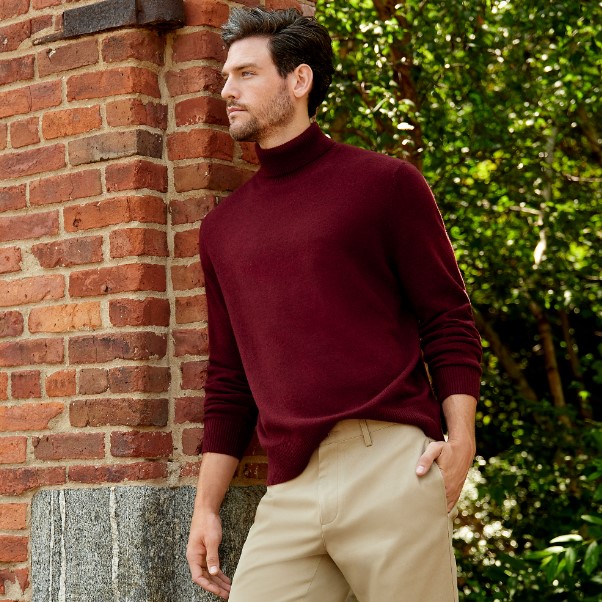
The best way: How to hand-wash cashmere sweaters
Cashmere may be a versatile material to wear, but it’s delicate as all hell. Makes sense if you think about it; anything that feels that soft would require an equally soft touch to keep it looking its best. So if you were wondering, “Can you hand-wash cashmere?” the answer is a resounding “Yes, please.”
The process of how to hand-wash a cashmere sweater is relatively simple. Start by filling up the tub, the sink, or some other large vessel with lukewarm water. Once it’s full, add in one load’s worth of gentle, cashmere-safe detergent — you’ll find our favorite picks below — and mix it up until you get some suds. Then it’s time to start dunking. Working one garment at a time, dip your cashmere sweaters into the soapy water until they’re fully submerged and swirl them gently for about a minute. You want them good and soaked.
Once all your sweaters are in the tub, leave them to soak for up to 30 minutes. That’ll give the detergent time to do its job. After that, drain the water and rinse off your cashmere thoroughly with cool water. You want to get rid of all the suds.
At this point, you’re going to want to wring out your sweaters. Do not wring out your sweaters. This will stretch out the knit and leave your cashmere deformed and ill-fitting. Instead, ball them up and squeeze as much water out of them as you can. Now you’re ready for drying.
The easy way: How to machine wash cashmere sweaters
Need to clean your cashmere sweaters but don’t want to do it by hand? A washing machine is still an option, but there are some measures you should take to keep your cashmere as safe as possible. First off, we’d suggest investing in a mesh laundry bag — that’ll keep the cashmere fibers from coming into contact with the washer’s machinery and wearing or snagging.
Second, you’ve got to make sure the machine is on its gentlest cycle. Make sure the water temperature is set to cold water and the spin is on low; otherwise, you risk shrinking or felting your sweaters. Finally, take your sweater out to dry the second that buzzer rings to reduce any creasing. And don’t you dare think about throwing it into the dryer.
How to dry cashmere sweaters

Where a lot of people go wrong isn’t actually in how they wash their cashmere, it’s how they dry it. Our advice: stay away from the dryer. The hot air inside is notorious for shrinking sweaters down to unwearable sizes, even if they’re set on a supposedly wool-safe setting. It’s just not worth the risk.
For a gentler drying process, reshape your sweater into how it looked before you began washing, lay it out on a drying rack, and let it air dry. This can take up to 8 hours, or longer if it’s a particularly thick sweater. Yes, it’s a slow process but it’s the only way to ensure your sweater fits properly when all’s said and done.
Speaking of, don’t hang your sweater on a hanger to dry, as that’ll stretch out the fabric. Not to mention, you’ll get these weird bumps on the shoulders from the corners of the hanger. (We’re speaking from experience, here.)
If you need your sweater to dry more quickly, lay it down between two dry towels and roll all three up like a sleeping bag. Then unroll it, replace the towels with fresh, dry ones, and repeat. This will not remove all the water from your sweater, but it will help reduce the time it spends on the drying rack.
And there you have you, you’ve successfully washed (and dried) your cashmere sweater.
The best detergents for washing cashmere sweaters
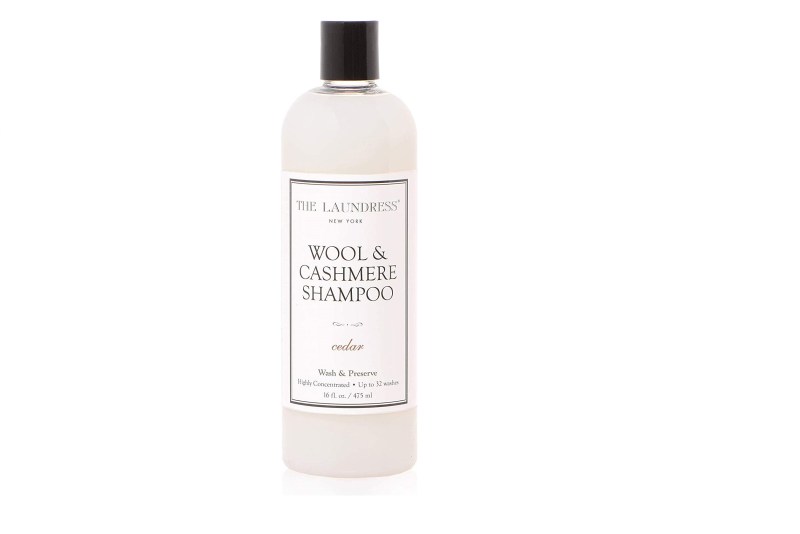
The key word in picking the right detergent for cleaning cashmere sweaters is “gentle.” Regular detergents can be too rough, damaging the natural fibers and stripping away cashmere’s sought-after softness. So what you’re looking for are cleaners specially formulated for knits and delicate fabrics.
The Laundress Wool & Cashmere Shampoo
The Laundress takes great care in making all its products, including this special wool and cashmere blend. The gentle product is a plant-derived formula and it cleans and preserves wool, cashmere, merino, and mohair. Plus, it smells like a morning walk through the woods.
Woolite Delicates Hypoallergenic Liquid Laundry Detergent
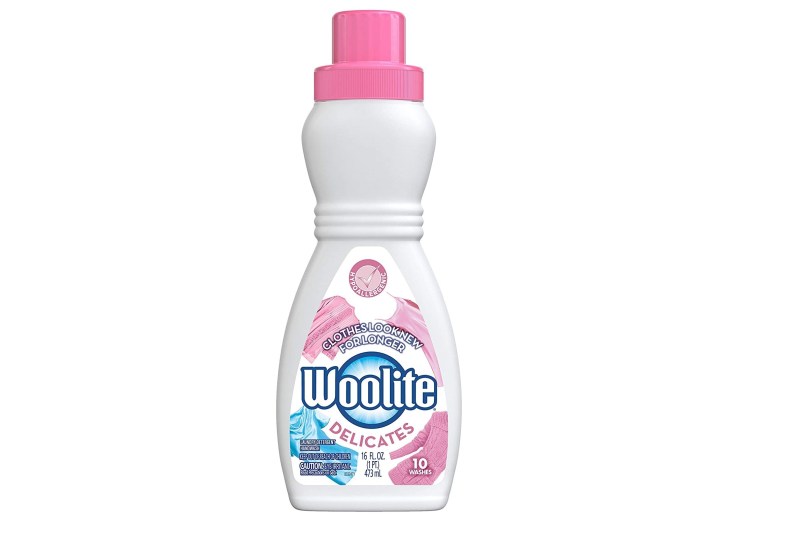
It’s all in the name, really: Woolite works wonders at lightly cleansing wool, cashmere, silk, and other more delicate (read: expensive) fabrics without fading colors or softness.
Soak Wash Rinse Free Wash for Handknits
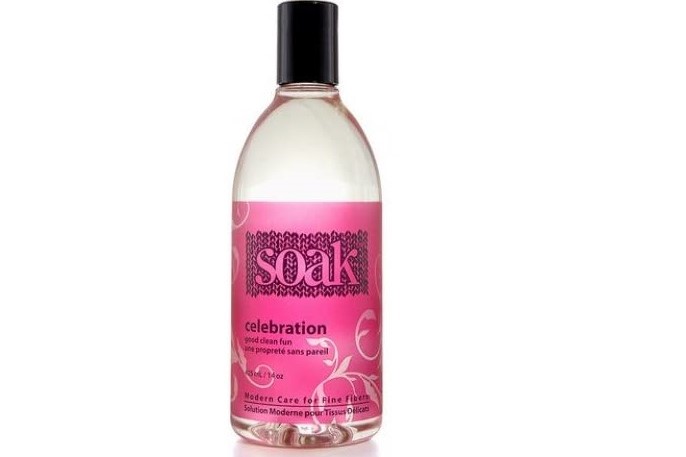
You know how you normally have to rinse the soap out after washing? Soak does away with that step. Their environmentally friendly soap is designed to not require rinsing — just soak, squeeze out the excess, and you’re all set.
Can I fix my cashmere sweater if it shrinks?
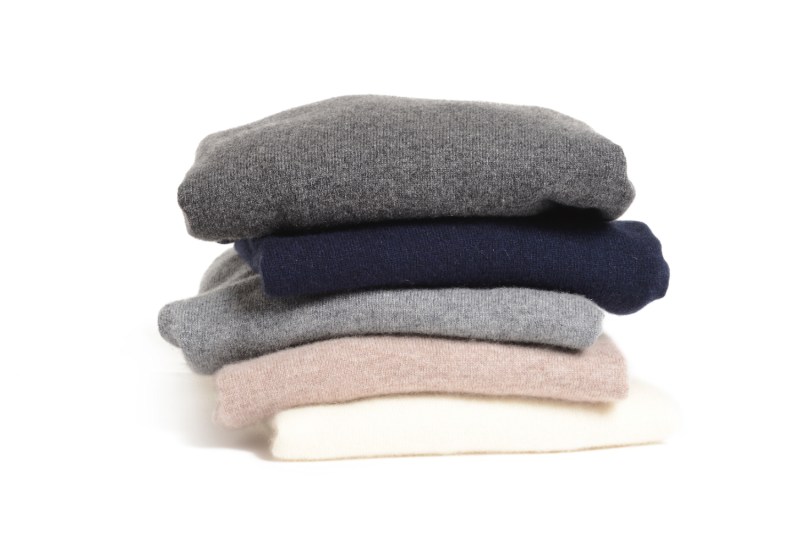
We get it, mistakes happen, and if you made a mistake with your cashmere and caused it to shrink, don’t worry, all is not lost. A shrunken cashmere sweater can be un-shrunk if you carefully follow some basic steps.
- Rewash the garment in cold water as you normally would for about 10 minutes.
- After removing all excess water (see above for tips on how to do that), place the sweater on a clean, flat surface.
- As the sweater dries, carefully pull and stretch the fabric (be patient, slow is better here. You don’t want to accidentally tear your sweater and make the problem worse). Also, try to do large areas — if you work on stretching small parts of the sweater, it could lead to a misshapen sweater.
- Once the sweater is back to the size you want it to be, leave it to completely air-dry.
How often should cashmere be washed?

When it comes to washing cashmere sweaters, the principle of less is more applies. While the frequency of washing depends on a number of factors; in general, don’t plan on washing cashmere sweaters after every time you wear them. According to the Laundress, if you don’t sweat much or overexert yourself while wearing the sweater, you should wash it after the third or fourth time you wear it. If you don’t wear the sweater very much, washing it once or twice per season is fine.
One time that you should definitely wash cashmere is before storing it away for an extended period of time. According to the Laundress, sweaters that are stored without being washed are at greater risk for insect damage as any residue from body oil or sweat can attract bugs.



